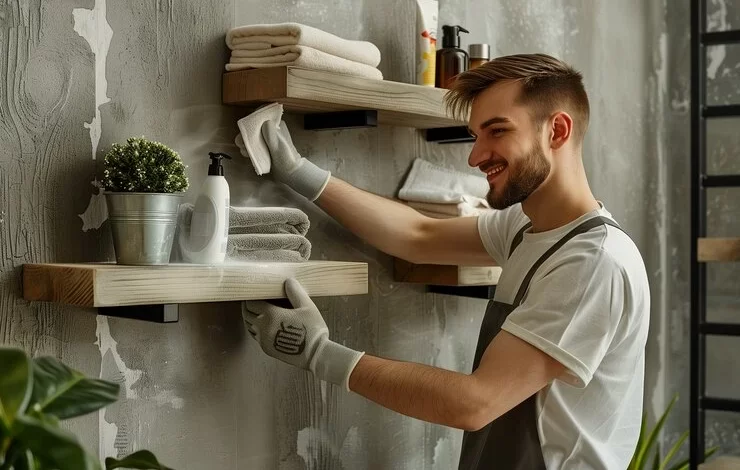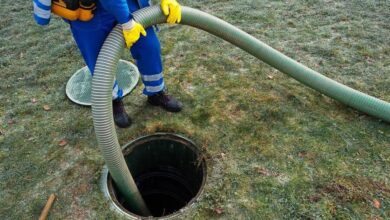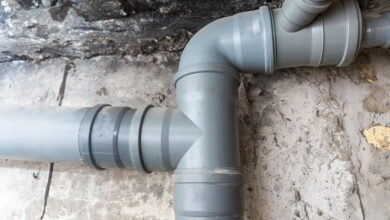Where to Find Eco-Friendly Plumbing Fixtures for Your Home

Have you ever stopped to think about how much water flows through your home every day? From brushing your teeth to washing dishes, we use water constantly without giving it a second thought. But what if I told you that your plumbing choices could make a huge difference in conserving this precious resource and saving you money in the process? Welcome to the world of eco-friendly plumbing, where every drop counts and sustainability meets convenience.
In this article, we’ll dive deep into the realm of eco-friendly plumbing fixtures and practices that can transform your home into a water-saving, energy-efficient haven. We’ll explore everything from low-flow toilets to solar water heaters, and show you how these small changes can add up to big benefits for both your wallet and the planet.
Key Takeaways:
- Eco-friendly plumbing fixtures can significantly reduce water and energy consumption
- Installing water-saving devices can lead to substantial cost savings on utility bills
- Sustainable plumbing practices contribute to environmental conservation and reduced carbon footprint
- Choosing the right eco-friendly fixtures involves considering efficiency ratings, compatibility, and aesthetics
- Simple changes in daily habits can complement eco-friendly fixtures for maximum water and energy savings
Types of Eco-Friendly Plumbing Fixtures
Let’s start by exploring the various eco-friendly plumbing fixtures that can make your home more sustainable. These innovative products are designed to use less water and energy without sacrificing performance or comfort.
Toilets: Flushing Away Excess Water Use
Did you know that toilets are one of the biggest water guzzlers in your home? Traditional toilets can use up to 6 gallons per flush, but eco-friendly options are changing the game.
Low-flow and dual-flush toilets are leading the charge in water conservation. These bad boys use as little as 1.28 gallons per flush for liquid waste, saving you a ton of water with each use. Dual-flush models take it a step further by offering two flush options – one for liquid waste and another for solid waste.
Here’s a quick comparison of different toilet models:
| Toilet Type | Water Usage (gallons per flush) | Potential Annual Water Savings |
|---|---|---|
| Traditional | 3.5 – 6 | Baseline |
| Low-flow | 1.28 – 1.6 | Up to 13,000 gallons |
| Dual-flush | 0.8 / 1.6 | Up to 20,000 gallons |
By switching to a low-flow or dual-flush toilet, you’re not just saving water – you’re also flushing away high water bills. Plus, many of these models come with powerful flushing mechanisms, so you don’t have to worry about performance issues.
Faucets: Tapping into Water Savings
Next up, let’s talk about faucets. You might not realize it, but those drips and unnecessary water flow from your kitchen and bathroom faucets can add up to a lot of wasted water.
Low-flow faucets and aerators are simple yet effective solutions. They reduce water flow without compromising on pressure, so you can still wash your hands or rinse dishes effectively. Some models even come with adjustable flow rates, giving you more control over your water usage.
For the tech-savvy homeowner, sensor-activated faucets are a game-changer. These hands-free wonders only run when they detect movement, eliminating wasted water from leaving the tap running. They’re not just for public restrooms anymore – more and more homeowners are installing them in their kitchens and bathrooms.
Showerheads: A Refreshing Approach to Conservation
Who doesn’t love a good shower? With eco-friendly showerheads, you can enjoy your daily rinse while still being kind to the environment.
Low-flow showerheads are the stars of the show here. They use clever designs to maintain or even improve water pressure while using less water. Some models use aeration techniques, mixing air with water to create a full, satisfying spray with reduced water flow.
Here are some popular types of water-saving showerheads:
- Aerating showerheads: Mix air with water for a misty spray
- Laminar-flow showerheads: Create individual streams of water for a more traditional feel
- Pulsating showerheads: Vary water intensity for a massage-like experience
- Rain showerheads: Provide a wide, gentle spray that mimics rainfall
Many of these showerheads use as little as 1.5 gallons per minute, compared to the standard 2.5 gallons. That’s a lot of water saved over time!
Water Heaters: Heating Things Up Efficiently
Now, let’s turn up the heat on energy savings with eco-friendly water heaters. Traditional tank water heaters can be energy hogs, constantly heating water even when you’re not using it. But there are better options out there.
Tankless water heaters are revolutionizing how we heat water on demand. These compact units heat water as you need it, eliminating the energy waste of storing hot water. They’re perfect for smaller households or as point-of-use heaters for distant faucets.
For those looking to harness the power of the sun, solar water heaters are an excellent choice. These systems use solar panels to heat water, significantly reducing your reliance on electricity or gas. While they have a higher upfront cost, the long-term energy savings and reduced carbon footprint make them a smart investment for many homeowners.
Other Fixtures: Completing Your Eco-Friendly Home
To round out your sustainable plumbing system, consider these additional eco-friendly fixtures:
- Eco-friendly dishwashers and washing machines: These appliances are designed to use less water and energy per cycle, helping you save on both water and electricity bills.
- Greywater systems: These innovative setups recycle water from sinks, showers, and washing machines for use in toilets or irrigation, maximizing your water efficiency.
- Rainwater harvesting systems: Collect and store rainwater for non-potable uses like watering your garden or flushing toilets, reducing your reliance on municipal water supplies.
By incorporating these eco-friendly plumbing fixtures throughout your home, you’re taking a huge step towards creating a more sustainable living space. But the benefits don’t stop there – let’s explore how these changes can positively impact your wallet and the environment.
Benefits of Eco-Friendly Plumbing
Switching to eco-friendly plumbing isn’t just about feeling good – it comes with a host of tangible benefits that can improve your life and the world around you.
Water Conservation: Every Drop Counts
The most obvious benefit of eco-friendly plumbing is water conservation. By using fixtures designed to use less water, you’re directly contributing to the preservation of this vital resource. Here’s how it adds up:
- A family of four can save up to 16,000 gallons of water annually just by switching to low-flow fixtures.
- Fixing a single leaky faucet can save up to 3,000 gallons of water per year.
- Using a dual-flush toilet can reduce your toilet water usage by up to 67%.
These savings might seem small on a daily basis, but they add up to significant water conservation over time. By reducing your water consumption, you’re helping to prevent water shortages and protect natural ecosystems that depend on healthy water supplies.
Energy Savings: Powering Down Your Bills
It’s not just about water – eco-friendly plumbing can also lead to substantial energy savings. Here’s how:
- Tankless water heaters can be up to 34% more energy-efficient than traditional tank models.
- Low-flow fixtures reduce the amount of water that needs to be heated, cutting down on energy use.
- Solar water heaters can provide up to 80% of your hot water needs using renewable energy.
By reducing your energy consumption, you’re not only lowering your utility bills but also decreasing your reliance on fossil fuels. This leads to a reduced carbon footprint and helps combat climate change.
Cost Savings: More Money in Your Pocket
Let’s talk dollars and cents. While eco-friendly fixtures might have a higher upfront cost, they can lead to significant savings over time:
- The average family can save $380 annually on water bills by switching to WaterSense-labeled fixtures.
- Energy-efficient water heaters can save homeowners hundreds of dollars per year on energy costs.
- Many areas offer tax credits or rebates for installing eco-friendly plumbing fixtures, further offsetting the initial investment.
Plus, homes with eco-friendly upgrades often have higher property values, making it a smart investment for the future.
Environmental Impact: A Greener Future
By choosing eco-friendly plumbing, you’re taking a stand for the environment. Here’s how your choices make a difference:
- Reduced water usage helps protect natural habitats and ecosystems.
- Lower energy consumption means fewer greenhouse gas emissions.
- Using sustainable materials in plumbing reduces the demand for harmful manufacturing processes.
Every eco-friendly fixture you install is a step towards a more sustainable future for our planet.
Choosing and Installing Eco-Friendly Fixtures
Now that you’re excited about eco-friendly plumbing, how do you go about choosing and installing these fixtures? Let’s break it down.
Factors to Consider
When selecting eco-friendly plumbing fixtures, keep these points in mind:
- Water efficiency ratings: Look for WaterSense certification, which ensures the product meets EPA standards for water efficiency.
- Energy efficiency ratings: For water heaters and appliances, check for ENERGY STAR certification.
- Compatibility: Ensure the new fixtures will work with your existing plumbing system.
- Aesthetics: Eco-friendly doesn’t mean ugly – choose fixtures that match your home’s style.
- Budget: Consider both upfront costs and long-term savings.
Installation Process
While some fixtures like faucet aerators can be DIY projects, others require professional installation. Here’s what you need to know:
- Hire licensed and experienced plumbers for complex installations like water heaters or toilets.
- Ensure proper installation techniques are used to maximize efficiency and prevent leaks.
- Learn about maintenance and upkeep to keep your eco-friendly fixtures running smoothly.
Remember, proper installation is key to getting the most out of your eco-friendly fixtures. Don’t hesitate to contact the professionals if you’re unsure about any part of the process.
Eco-Friendly Plumbing Practices
Installing eco-friendly fixtures is a great start, but your daily habits play a big role too. Here are some tips to complement your new fixtures:
Water-Saving Tips
- Fix leaks promptly – even small drips can waste gallons of water.
- Turn off the tap while brushing teeth or shaving.
- Take shorter showers – try timing yourself to stay under 5 minutes.
- Use a bucket to collect water while waiting for the shower to warm up, and use it for plants or cleaning.
Energy-Saving Tips
- Insulate hot water pipes to reduce heat loss.
- Set your water heater to 120°F (49°C) – hot enough for most uses but not wastefully hot.
- Use cold water for laundry when possible – modern detergents work well in cold water.
- Run dishwashers and washing machines only when full to maximize efficiency.
Sustainable Materials
When replacing pipes or doing plumbing repairs, consider these eco-friendly options:
- Use lead-free and corrosion-resistant pipes like PEX or copper.
- Choose eco-friendly sealants and adhesives that have low VOC emissions.
- Recycle old plumbing materials instead of sending them to landfills.
By combining eco-friendly fixtures with these sustainable practices, you’re creating a comprehensive approach to green plumbing in your home.
Conclusion
As we’ve explored in this article, eco-friendly plumbing is more than just a trend – it’s a smart, responsible choice for homeowners who want to save money, conserve resources, and reduce their environmental impact. From low-flow toilets that slash water usage to energy-efficient water heaters that cut down on power consumption, there are countless ways to make your home’s plumbing system more sustainable.
Remember, every drop of water saved and every kilowatt-hour of energy conserved adds up to make a real difference. By choosing eco-friendly plumbing fixtures and adopting water-saving habits, you’re not just transforming your home – you’re contributing to a more sustainable future for all of us.
So, are you ready to take the plunge into eco-friendly plumbing? Start small with a low-flow showerhead or go big with a solar water heater – whatever you choose, you’ll be on your way to a greener, more efficient home. Your wallet, your conscience, and the planet will thank you for it.
Let’s make every drop count and every energy-saving choice matter. Together, we can create homes that are not just comfortable and functional, but also kind to the environment. Now that’s something worth raising a (water-efficient) glass to!



